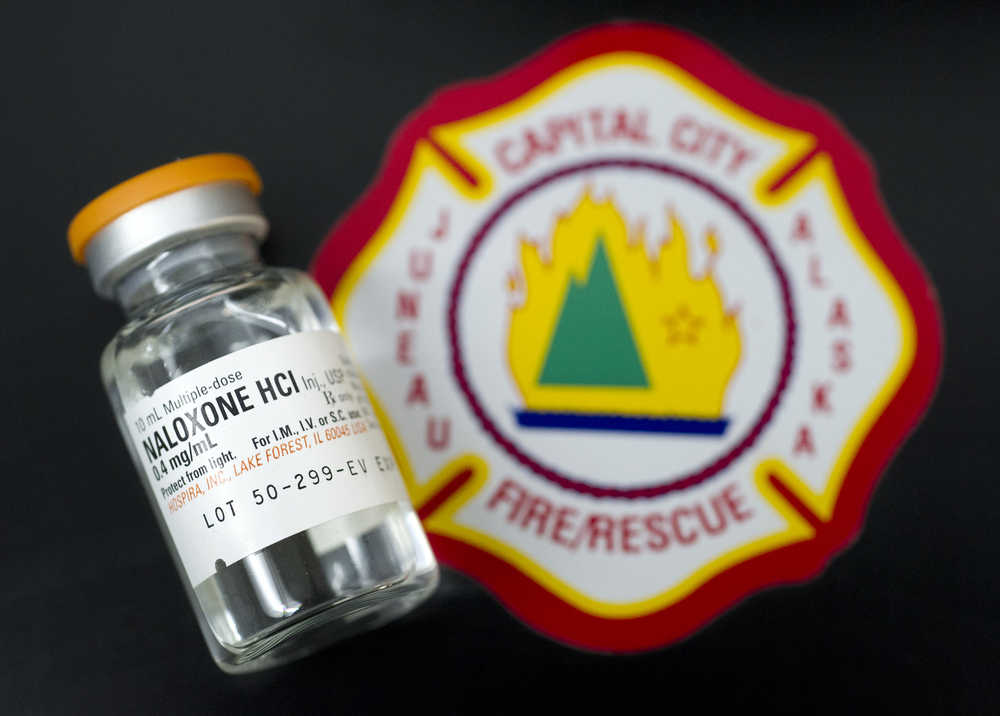“Oftentimes, we say certain bills or resolutions aren’t life or death, but in this case, it is life or death.”
So began Sen. Johnny Ellis, D-Anchorage, on Tuesday afternoon. Ellis, speaking before the Alaska House’s Health and Social Services committee, is promoting Senate Bill 23, which would legally shield anyone who gives an overdose-preventing medication to someone who is overdosing on heroin or opioid painkillers.
It’s not a niche problem.
“This is basically a national epidemic,” explained Daniel Nelson, president of the Alaska Pharmacists Association, in testimony to the committee.
Dr. Jay Butler, the state’s chief medical officer, testified that last year, 54 Alaskans died of opioid painkiller overdoses, and another 34 died of heroin overdoses. Eight of those deaths were in Juneau. The figures are rising, in part because of the overprescription of opioid painkillers, which are derived from the opium poppy and can be addictive. Hooked on painkillers, Alaskans (and Americans nationwide) turn to heroin as an alternative. Last year, Ellis testified, more young people died in Anchorage from heroin overdoses than traffic accidents.
In Juneau, Michele Stuart Morgan started the group “Stop Heroin, Start Talking” after a 26-year-old softball teammate died of a heroin overdose. On Tuesday, she spoke to the House committee and shared the story of a young man who overdosed in front of seven friends. Six months later, one of those friends overdosed as well.
“It’s not going to cure what’s going to happen,” she said of the bill, “but if it can save just one (person) … then I’d thank you so much for making this available to our state.”
Formally, the bill gives legal immunity to anyone who goes through a short training session and later administers the prescription drug Naloxone to someone suffering an overdose.
Naloxone, typically administered with an injection and sometimes called Narcan, immediately counteracts the effects of an overdose and can be a lifesaving drug if administered in time. It has no significant side effects, and those who testified Tuesday said there is no harm if it is inadvertently administered to someone who is not overdosing.
Forty-two other states have provided legal immunity under similar legislation.
“I think any risk we’re providing to the community is nonexistent,” Nelson said.
While Naloxone is effective and carried by many firefighters, police and ambulance crews, it isn’t in wide use among the general public.
Because overdoses typically occur with friends and family nearby, public officials are seeking ways to put this “fire extinguisher” drug in the hands of more people.
On Tuesday, person after person testified about the importance of Naloxone. There were doctors and nurses, public health experts and those who had seen family members die of overdoses.
“Increasing access to Naloxone is pretty much universally supported,” said Dr. Sarah Nelson of Anchor Point. She works at the South Peninsula Community Hospital in Ninilchik and is a member of the American Society of Addiction Medicine.
“There really isn’t any argument on this in the field of medicine,” she said.
On Tuesday, there didn’t appear to be any argument in the House committee, either. SB 23 was approved by the Senate last year in a 19-1 vote, and discussion Tuesday focused mainly on ensuring the bill covers the widest scope possible.
Rep. Paul Seaton, R-Homer and chairman of the committee, asked whether the training called for in the bill could be provided by “CD” or some kind of video instruction, or if it had to be in person. Another member of the committee asked whether training could be passed from hand to hand – if one member of a family could train others, or what might happen if only one member of the family is trained.
The House committee is scheduled to meet again to discuss these and other issues Feb. 4. If approved, it will advance to the House Judiciary Committee. Approval there would move it to a vote of the full House. Passage would lead to the governor’s desk and signature into law.

